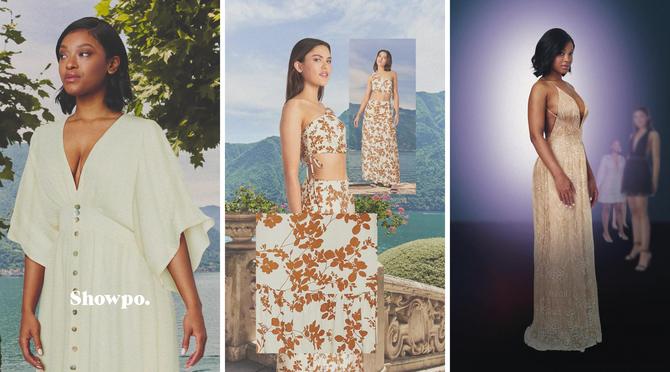
Why digital-first fashion brand Showpo is adopting AI fashion models
[ad_1]

The fashion industry has long been criticised for relying on a single small sample size to showcase clothing. But the cost as well as logistics burden has meant showing clothing on a diverse range of sizes has been not commercially viable for many businesses.
“Shooting catalogue photography on multiple models can be very expensive, making it not commercially viable for most businesses. It’s a major factor in why the industry has not been able to move more ahead in this space,” Showpo founder, Jane Lu, explained to CMO.
However against this is growing demand for fashion brands to adapt to body diversity and acceptance movements and move away from using small-size models to display their clothing. In line with this, Australian-owned and social media-led ecommerce brand, Showpo, recently adopted technology enabling it to utilise artificial intelligence (AI) models, allowing its clothing to be shown on a greater range of body sizes.
“AI models allow for a more diverse range of models at scale as one outfit can easily be shot and applied to a wider variety of models that fit our diverse size range of 4-20,” said Lu.
The AI technology driving this innovation will let brands like Showpo develop personalised content for diverse audiences, while at the same time saving on costs, Lu continued. The decision to merge fashion with technology also allows Showpo to ensure a wider range of diversity in its ecommerce shoots.
Lu explained how applying technology means it can apply a single outfit to a wide variety of models across the full extent of the size range including sample-size, mid-size and curve models. “It’s a goal we’ve had in mind since first extending our size offering in 2016,” she said.
Partnering with Meta
Showpo is working with Meta on the Australian-first marketing approach using the new AI-based 3D models. The ad creative will be tested against regular ecommerce assets to assess the marketing efficiency of the AI models against standard ecommerce model creative.
“We’d like to test if using 3D models and AI creative in ads will lead to better personalisation and visualisation of our products for potential customers and to better conversions compared to product only creatives,” said Lu.
After the four-week trial, and if it proves successful at driving traffic and conversions, the brand will look to extend application of the technology by repurposing the 3D AI model outputs in new campaigns or in other ads in the Australian market.
Although other brands are beginning to utilise 3D models and AI models, particularly in the US, Showpo is the first Australian brand to market with this ad technology and is looking forward to reviewing how it performs.
“This is just the beginning with more opportunities and projects already in the works to provide new ways to market our products as a digital first brand,” she said.
If the ads do prove successful on Facebook and Instagram, the tech may also be rolled out across its site – and beyond.
“AI technology can help us automate our on-model product photography process in a cost efficient and scalable way while ensuring we can embrace diversity thanks to the diverse library of Vue AI models,” Lu said.
Nevertheless, the brand hasn’t overlooked the importance of ensuring the creative is localised. “The three trial ads made for US customers feature models of diverse sizes and ethnicities, with African American, Asian and Caucasian backgrounds represented; if expanded to other markets, this content would be personalised for each area,” she explained.
In tapping into the Vue AI technology, Showpo is continuing its digital-first approach to both its business and its brand marketing. Lu saw the technology as a game changer for ecommerce brands across the board.
She pointed out it will provide opportunities for a more personalised purchase journey by showcasing more than a narrow set of models, boosting purchase intent though personalisation and greater diversity of imagery and return on ad spend through this deeper personalisation. Lu also expected it to reduce the cost and burden of returns, which can be a real handbrake for fashion brands relying heavily on digital advertising and online retail.
“We think AI models will become a new production tool to accelerate ecommerce efforts and help us generate multipurpose digital assets at scale,” she added.
Don’t miss out on the wealth of insight and content provided by CMO A/NZ and sign up to our weekly CMO Digest newsletters and information services here.
You can also follow CMO on Twitter: @CMOAustraliatake part in the CMO conversation on LinkedIn: CMO ANZfollow our regular updates via CMO Australia’s Linkedin company page
[ad_2]
Source link


